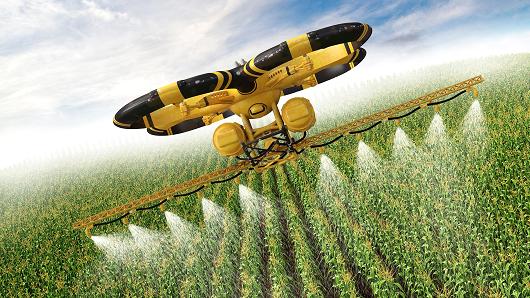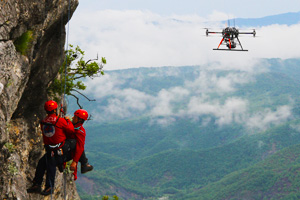The use of unmanned aerial vehicles (UAVs), also known as drones, is increasing in both the military and civilian sectors. Although military drones are a familiar concept, commercial and civilian use of the technology is still evolving. Potential applications of this inexpensive and accessible bot are unlimited and, in some instances, unorthodox. Here are five unconventional uses for drones:
1. Dance Partner
Drones are already fantastic tools for capturing footage, but now, many people are beginning to turn the camera at the devices themselves. Season 11 of the hit show America’s Got Talent, featured a diverse array of human and non-human talent. During the second night of auditions, the Japanese multimedia troupe Elevenplay broke the norm and took the stage with five dancers and 24 drones to create a stunning visual performance. Choreographer and programmer Daito Manabe has been working with the dance company since 2011 to produce works using “mechanical learning technologies…in order to devise new expressions of the body.”
The drones the group used were equipped with a motion capture system and performed with the help of a light programmer to synchronously move with and around the dancers in a pre-determined flight path.
2. Farm Hand

Relatively inexpensive drones with advanced sensors and imaging capabilities are leading the modern-day farming revolution . Precision agriculture technologies are giving farmers new ways to increase yields and reduce crop damage.
Drones affixed with tiny MEMS sensors (accelerometers, gyros, magnetometers, and often pressure sensors), GPS modules, and cameras can closely monitor crops more regularly, at a lower cost point compared to traditional satellite methods. Also, near-infrared sensors enable farmers to detect crop health, allowing them react to changing conditions in real-time with inputs of fertilizer or insecticide.
As more and more farmers find success with drones, hardware and software vendors are beginning develop new technologies for the growing list of clients in the agriculture and land management industries.
3. Wildlife Monitor 
The application of drones for ecological monitoring is fast becoming a key conservation strategy, useful in everything from monitoring sea lion populations in California, to patrolling for elephant poachers in Africa. A new study conducted by ecologist Dr. Rohan Clarke at Monash University reinforces this notion, finding that drones frequently obtain more accurate data than scientists and conservationists on the ground due to their wider vantage point and ability to monitor remote, out of reach areas.
To add to that, drones are better able to approach wildlife closely without spooking it, and may operate at night using thermal camera sensors—something far more dangerous for a human to do.
4. Search and Rescue

Search and Rescue (SAR) missions are time-consuming, expensive, and dangerous for the people involved. In order to function as efficiently as possible, it is important to be able to obtain a comprehensive overview of the situation and to deploy rescue resources rapidly. While planes and helicopters require some time to be ready for deployment, a drone can be put into action immediately.
Using thermal infrared and visible spectrum cameras, SAR drones can become a standard way to perform search missions as they are able to cover large areas of inaccessible terrain, even at night. Heavy-lift capable drones can even deliver lifesaving payloads to victims in various rescue scenarios.
5. Construction Worker

Construction projects are complicated, time-consuming and resource-intensive projects. Drones are fast becoming a mainstream technology and a sophisticated tool in the construction industry as well, by allowing builders and engineers to monitor construction sites from above and gain valuable information during all phases of a project lifecycle.
Drones are versatile tools, modifiable for a variety of purposes including surveying and monitoring job sites, building maps, inspecting structures, and keeping a project on track. The ability to quickly model from above in 3D with increasing precision will provide an important way to keep track of construction projects.
Given the growing opportunities for use, drones can be easily adapted for new areas of application.
Sources: Sploid
Advertisement
Learn more about Electronic Products Digital





